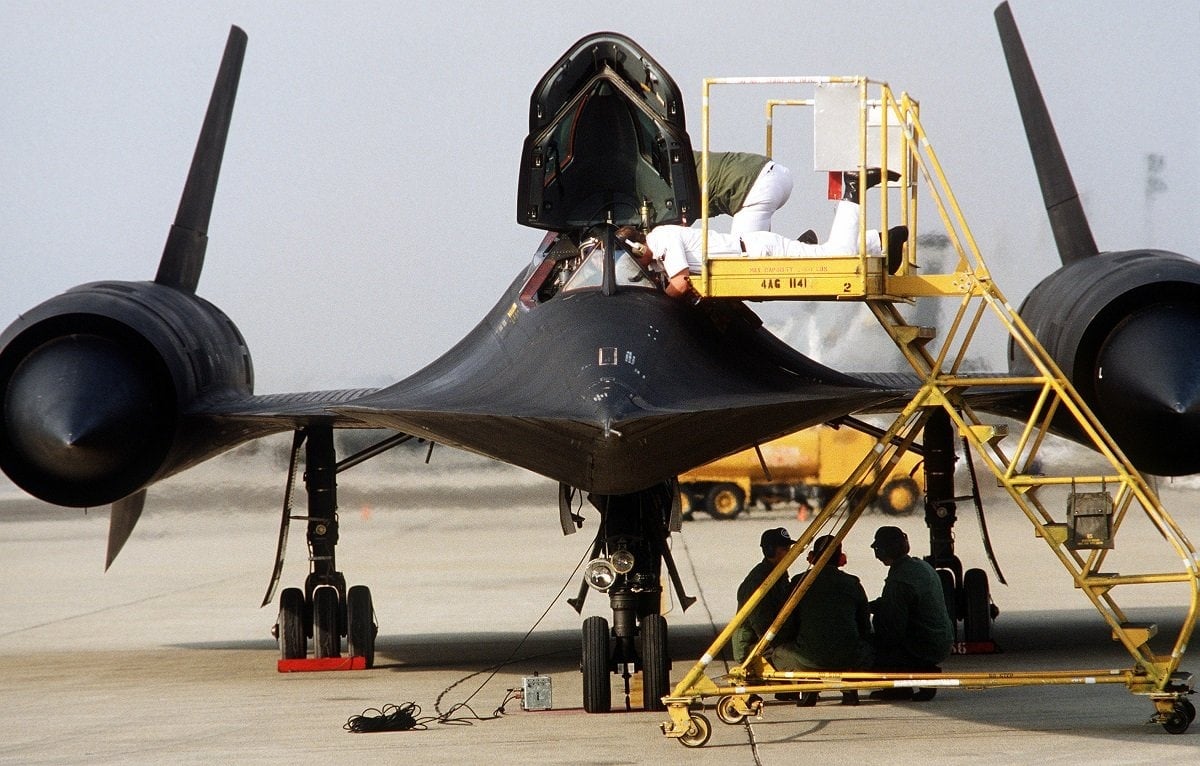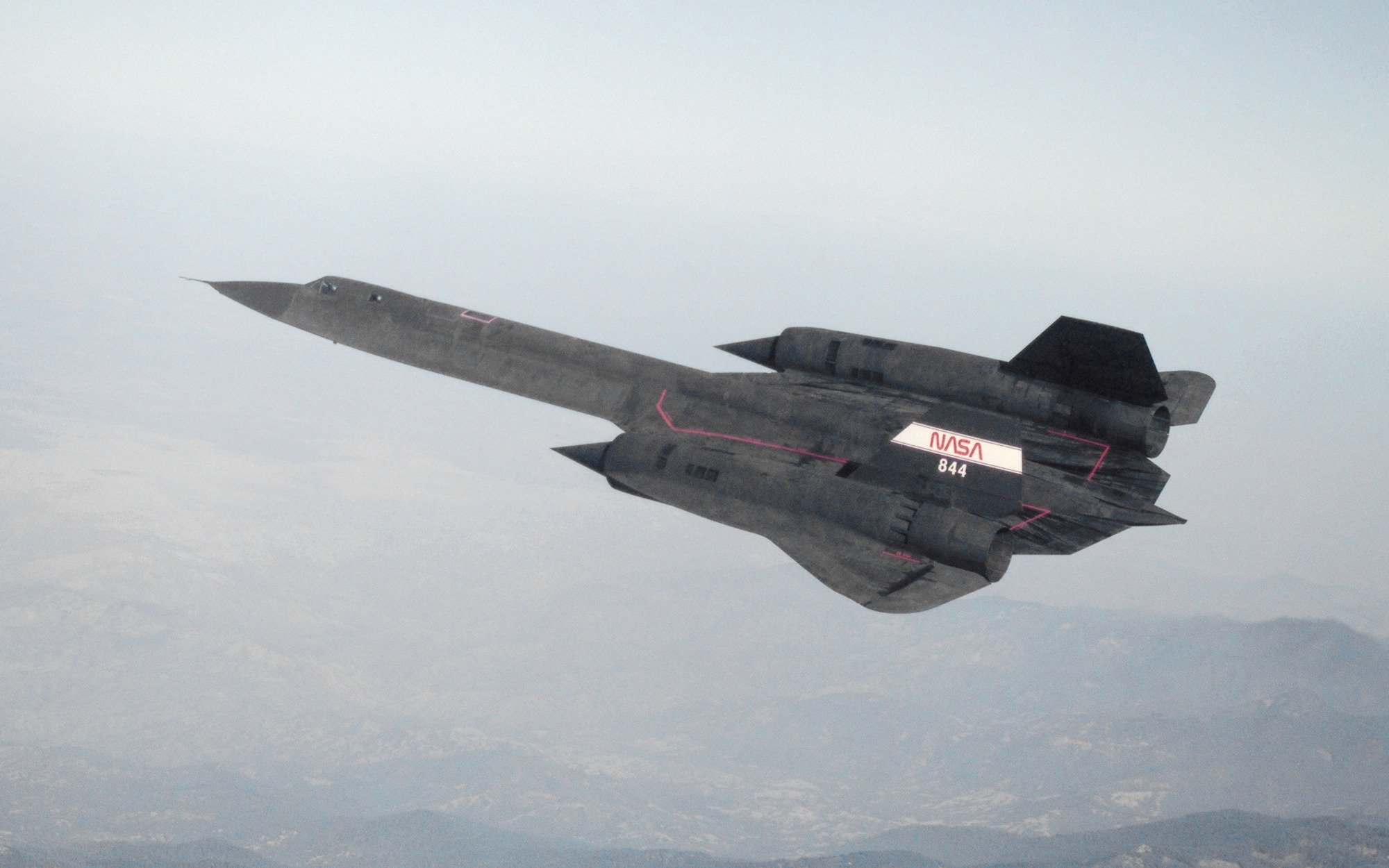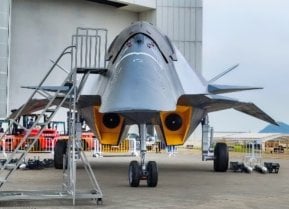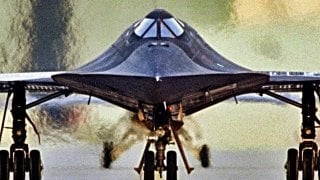SR-71C was a Real 'Frankenstein' Blackbird Spy Plane That Hit Mach 3.56
The SR-71C "Hybrid Trainer," nicknamed "The Bas****," was a unique Blackbird variant created by merging parts of two different SR-71 aircraft.
What You Need to Know: The SR-71C "Hybrid Trainer," nicknamed "The Bas****," was a unique Blackbird variant created by merging parts of two different SR-71 aircraft.

-Built using the front section of the first-ever SR-71 and the rear portion of a crashed SR-71B, this hybrid was challenging to fly due to initial misalignments causing drag and yaw.
-After corrections, the SR-71C performed well and was used for training missions, similar to the SR-71B.
-This one-of-a-kind aircraft is now preserved at the Hill Aerospace Museum in Utah, a testament to the ingenuity and resilience of aerospace engineering.
Meet the SR-71C: The Hybrid Blackbird That Defied All Odds
Thirty-five years after her official retirement from U.S. Air Force service and twenty-five years after her retirement from NASA, the Lockheed (now Lockheed Martin) “Skunk Works” division’s most famous brainchild, the SR-71 Blackbird, remains the fastest air-breathing aircraft ever made. The Blackbird has a level flight speed record of Mach 2.858 (2,193.167 mph; 3,520.058 km/h) and a dive speed record of Mach 3.56 (2,731.478 mph; 4,395.888 km/h).
(For the record, the fastest-ever aircraft of *any* kind remains the North American X-15 rocket plane, with a mind-blowing speed record of Mach 6.7 [5140.703 mph; 8273.16 km/h].)
As rightfully famous as Clarence “Kelly” Johnson’s pride & joy was and still is, we’re now going to discuss a lesser-known, more obscure variant—the one-of-a-kind, legendary Lockheed Blackbird: the SR-71C hybrid trainer.
Say What?
No, not “hybrid” in the same vein as present-day hybrid automobiles!
The story comes to us courtesy of the Quebec-based online publication Simple Flying, more specifically a December 18, 2023, article by Justin Hayward titled “What Made The Lockheed SR-71C Hybrid Trainer Aircraft Unique?”:
“The SR-71C was certainly a unique aircraft. It was created by combining two other SR-71 aircraft into one … The first of these was one of the SR-71B test aircraft (with the serial number 61-7957). This crashed during a training flight in January 1968. The rear portion of the aircraft was recoverable, however, and this was used for the SR-71C … The other aircraft was the first SR-71 aircraft built. This had been used as a static test aircraft, and the front portion of this aircraft was used for the SR-71C. It had never been intended for operational flying but was fully serviceable.”
The fore and aft portions of the two planes were merged together to create a complete aircraft in a manner that would make Dr. Frankenstein proud. The hybrid aerial beast was not-so-affectionately nicknamed “The Bas****” on account of her (or would that be his?)
“The Bas**** Breaks Ground”
Given those difficult flying characteristics, it was appropriate that the first person chosen to fly the SR-71C variant was a veteran Blackbird pilot, indeed no less than Robert J. “Bob” Gilliland, who had been the pilot on the Blackbird’s historic maiden flight back on December 22, 1964, (and ended up logging more test flight hours at Mach 3 than any other pilot in the world).
That first SR-71C flight took place in March 1969, with Bob Gilliland serving as chief pilot, accompanied in-flight by Lockheed test pilot Steve Beagleau, who served as co-pilot and reconnaissance systems officer (RSO). As already indicated, flying the hybrid was challenging, to say the least, as the variable air inlets and bypass door had not been properly aligned during the initial merging of the two aircraft bodies, which resulted in increased drag on the airframe, which in turn caused an unintentional four degrees of yaw.
Luckily, before long, the maladies were corrected the pitot boom was properly aligned, and from there on out, the SR-71C performed up to snuff. Like the two SR-71B aircraft, the SR-71C variant wound up being used for training flights, with the only real difference being that there was one fewer fuel tank than the SR-71B.

Where Are They Now?
Bob Gilliland passed away on the Fourth of July at the ripe old age of ninety-three. He is survived by his son Robert, Jr. and his daughter Anne Hayes. As for Steve Belgeau, I’ve been unable to find an obituary or any other biographical information on him, so if any of our readers have any insights they could provide, it’d be tremendously appreciated!
“The Bas****” (AF S/N 60-6934), her unflattering nickname notwithstanding, has been preserved for posterity and is on display at the Hill Aerospace Museum on the grounds of Hill AFB, Utah (approx.. 30 miles [48 km] north of Salt Lake City.
About the Author
Christian D. Orr is a Senior Defense Editor for National Security Journal (NSJ). He is a former Air Force Security Forces officer, Federal law enforcement officer, and private military contractor (with assignments worked in Iraq, the United Arab Emirates, Kosovo, Japan, Germany, and the Pentagon). Chris holds a B.A. in International Relations from the University of Southern California (USC) and an M.A. in Intelligence Studies (concentration in Terrorism Studies) from American Military University (AMU). He has also been published in The Daily Torch , The Journal of Intelligence and Cyber Security, and Simple Flying. Last but not least, he is a Companion of the Order of the Naval Order of the United States (NOUS).
Image Credit: Creative Commons and/or Shutterstock.


